Growing vegetables is an easy way to save money, stay active and eat fresh vegetables. Growing vegetable plants from seeds is an easy process. It is cheaper than buying a transplant. Whatever the reason, starting plants from seed may not be as difficult as you think.
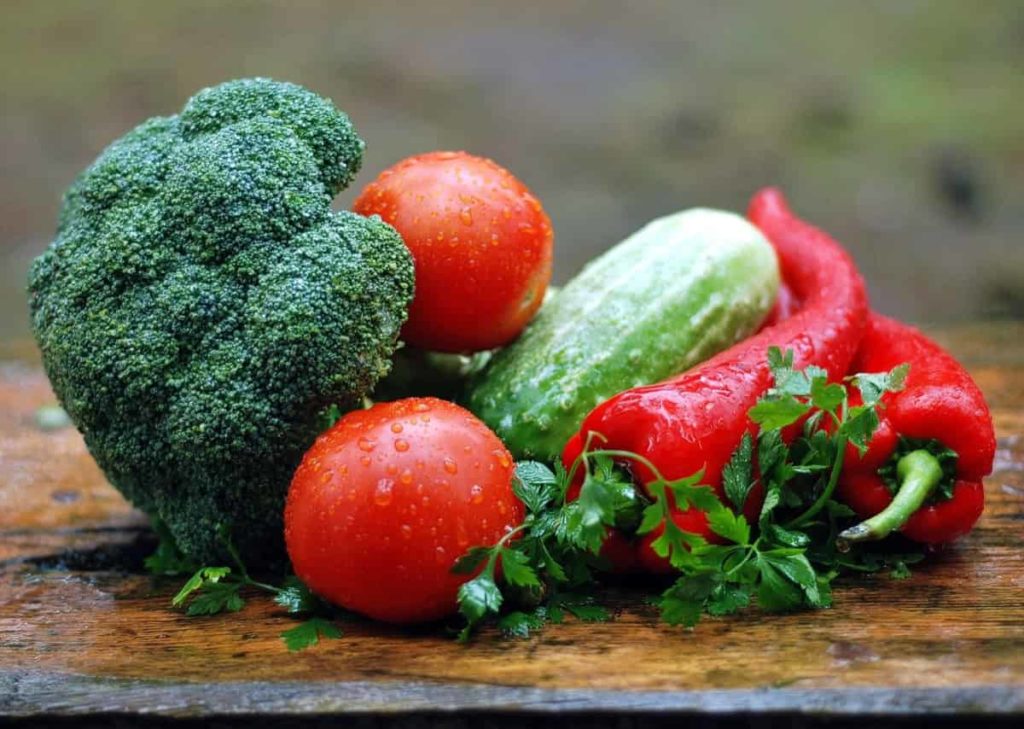
Growing vegetables from seed is a great way to start gardening early in the season. With the right light and some handy tools, it’s easy to grow from seed to harvest. Because each plant has unique requirements for starting seeds, it helps to start small by growing only a few varieties. Let’s check out vegetable seeds for the rainy, summer, and winter seasons.
Tips for growing vegetables from seed
- Use a light, well-drained means of growing your seeds. A light ventilated medium has enough air between the soil particles to increase the chances of successful germination. They also support root development because small roots do not have to struggle much to spread. In addition, a loose-rooted medium makes transplantation much easier.
- Never bury your seeds deep. The general rule of thumb, if not specified, is to cover the seed with a layer of soil that is not more than twice the size of the seed.
- Do not sow the seed very deep – The general rule of thumb is that the seed should be sown twice as deep as the length of the seed. Sow the seed thinly, because crowded thick sowing is useless, it requires extra effort to remove the unwanted plants later and it can also encourage ‘damping off’ disease.
- Sow the seeds directly on the surface of the compost, keeping them as far apart as possible. Spray a thin layer of compost or vermiculite on top. Vermiculite is recommended for very small seeds, as the emerging seed can push more easily.
- Your seeds need rich and fertile soil to grow. Add organic matter in the spring and add it to the soil, digging about 1 foot below to loosen the soil. Alternatively, do as many gardeners do and add organic matter in the fall so that it requires less work in the spring.
- Before planting any seeds, the area should be weed-free. Otherwise, weeds compete for water and nutrients.
- Seeds have a shelf life, and while you can often avoid using older seeds, just be prepared for a low germination rate. Use fresh badges from a reputable company for the best results.
- For vegetables that grow slowly from seed, try to start the seed indoors several weeks before planting dates. Vegetables that grow slowly from seed and are ideal to start indoors include Tomatoes, Broccoli, Cabbage, Cabbage, Eggplant, and Pepper.
- In general, plant the seed twice as deep as the seed diameter, not too deep. However, refer to the badge packet for this information. Some seeds only need to be pressed to the surface of the soil, as they need more light to germinate.
- Keep your germinating setup with adequate ventilation in indirect light. Germinating stations should never be set up in an area exposed to direct sunlight, as bright light can kill sprouts. The light should be bright for most of the day, a good parameter is that you can read easily in this light. The place should be relatively warm with adequate ventilation.
In case you miss this: How to Grow Lettuce at Home with Seeds and Without Seeds
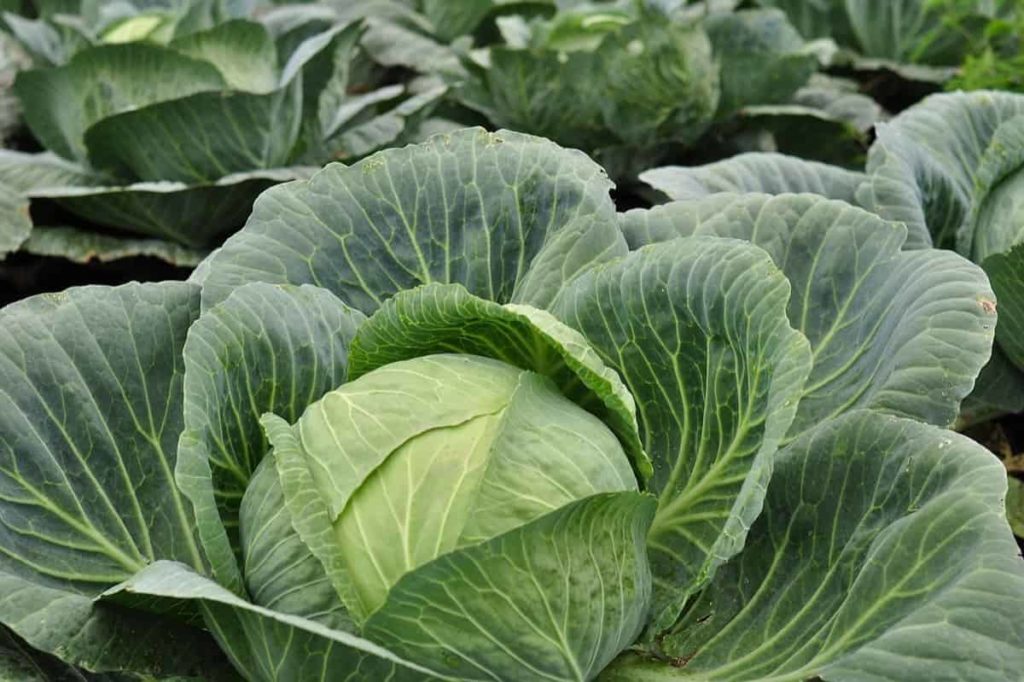
Best vegetable seeds in the rainy season
Some plants need a specific environment to thrive, temperature level, humidity, soil pH level, all these factors play an important role in plant growth. Plants may need special care to deal with excess moisture. Extreme temperature fluctuations can be detrimental to the plants you are planning to grow. So, it is important to know which season is suitable for which type of plant.
Some plants adapt and thrive in the rainy season. This is especially important for food safety, especially during the monsoon season. It starts raining in July and the temperature drops and the soil cools down. Therefore, August is the best time to sow vegetable seeds. These vegetable seeds are easy to sow and grow.
Tomatoes
Plant tomato seeds in well-drained soil about 1/4 inch deep and 3-4 inches apart. The ideal temperature level required for tomato seed germination is between 21 and 27℃.
Radish
Before you start planting seeds, remove any rock from the soil so that radish can grow well. Plant the seeds about 3 inches deep and 2 inches apart.
Beans
Choose a place with most or partial sunlight to plant your seeds. Plant the seeds at least 3 inches apart and about an inch deep.
Eggplant
Seeds can go directly into your gardens. Plant the seeds about 1 cm deep and about 15 cm apart.
Cucumber
Plant cucumber seeds 1 inch deep and 2-3 inches apart. If you have limited space or you want to grow cucumber vines, support it with trellis.
Pepper
You can buy pepper seeds online and start growing them indoors for 8 to 12 weeks before transferring them outside. The best way to grow them is to keep the soil moist but not more than water and keep them warm in a sunny place as they like the sun.
In case you miss this: Growing Eggplant from Seeds – At Home
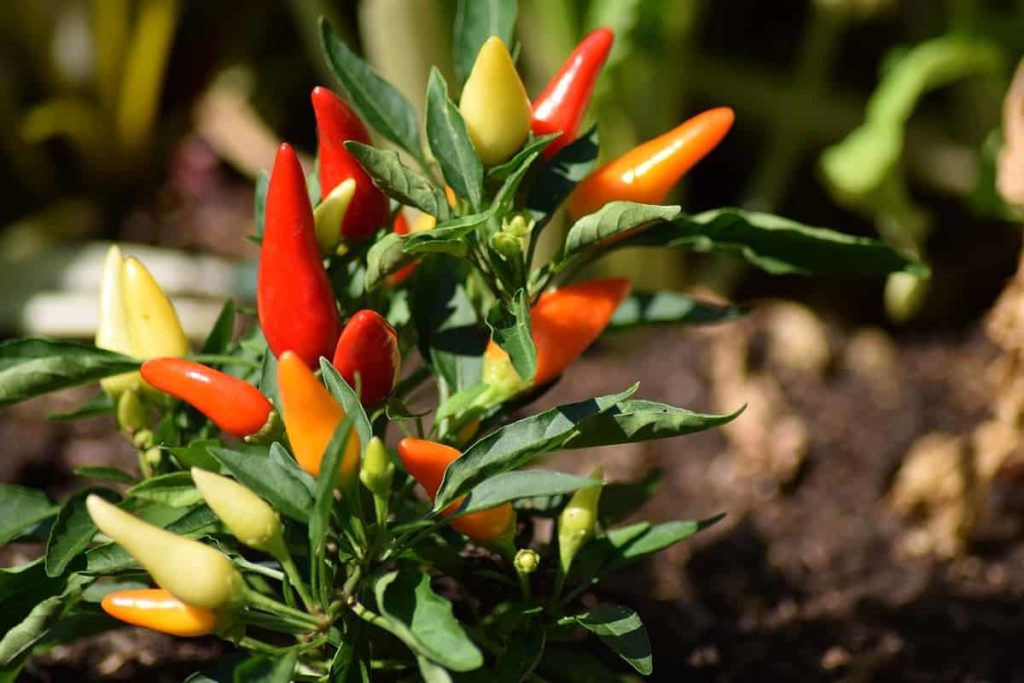
Bottle gourd
Seeds are sown directly in small pits or on high beds that germinate in 7-8 days. Bottle Gourd plants grow very fast and quickly become a climber’s habit. Bottle Gourd seeds are sown in the plains for monsoon or rainfed crops from June to July and the hills in April.
Bitter gourd
Bitter gourd is an important vegetable crop. It is grown by the sowing method. These are not transplanted properly. Bitter gourd seeds are sown in suitable places in round pits so that the plant can walk on poles, roofs, pergolas, stains, or trails. Monsoon sowing is done in June-July.
Bhendi or Okra
Okra prefers full sunshine, so choose a sunny place to plant your seeds. Plant the seeds approximately 1/2 to 1 inch deep and 12-18 inches in a row. Soak the seeds in lukewarm water overnight to speed up the germination process. Keep the vegetable plants well-watered throughout the growing period. The first harvest will be ready 2 months after sowing. Harvest the okra when it is 2 to 3 inches tall. Pick these fresh Bhendi and enjoy them raw, pickled, or fried.
Beetroot
Beetroot (Beta vulgaris) is a cold-season root vegetable. Beetroot is also easy for vegetable gardeners. Keep the pot in a sunny place. It appears after 15 days and is ready for harvest about 2 months after sowing. This is when they are soft and as big as a golf ball. When it comes to choosing good quality seeds, make sure you buy the seeds from a reputable supplier and it is a good practice to go through the reviews and seek the guidance of an experienced person when it can be all about buying seeds online and getting information about growing.
In case you miss this: Growing Organic Beetroot – Planting, Tips, Ideas
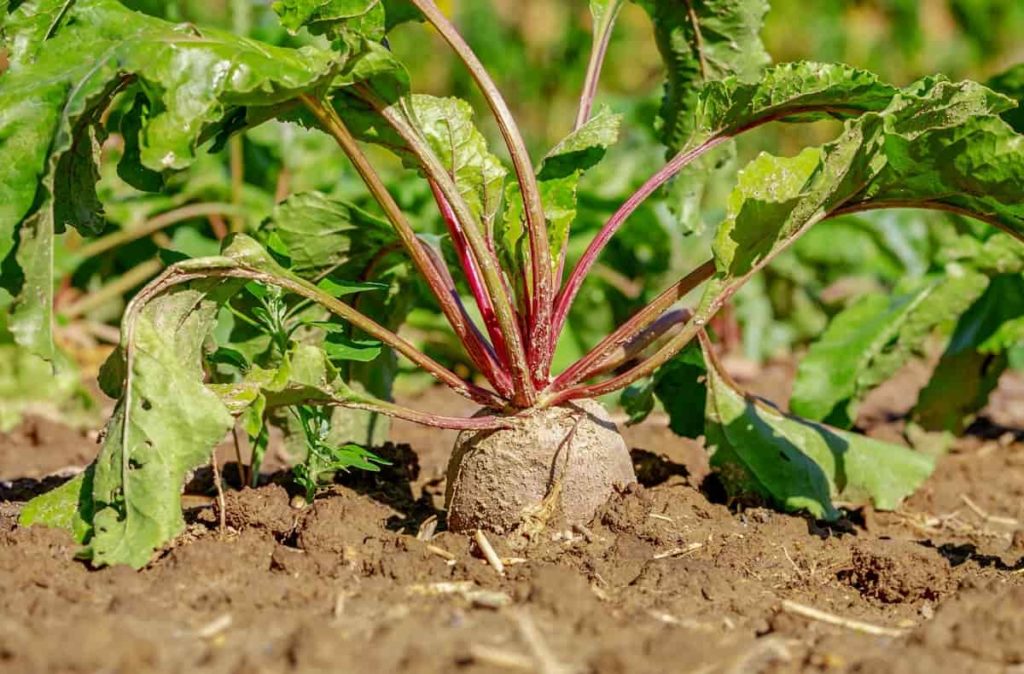
Some other rainy season vegetable seeds are Tinda, Sponge Gourd, Pepper Pumpkin, Capsicum.
Best vegetable seeds in the summer season
Summer is the best season to grow a variety of vegetables. With increasing soil temperatures and intense sun, these fruiting vegetables come alive in your kitchen garden. There are many varieties of vegetable seeds that you can sow in the summer season.
Eggplant
Eggplant seeds are sown at a depth of about 10 mm in well-prepared beds spaced 24 to 30 inches apart.
Beetroot
Beetroot is adapted to grow in cold temperatures, making it an excellent vegetable for planting in late spring and summer. It is possible to plant continuously during the summer as long as the daytime temperature does not exceed 24°C. It prefers well-drained and fertile soil, but it will also tolerate below-average soil fertility. For the beetroot roots to grow properly, the soil must be free of rocks and other obstacles. Soil pH is best between 6.0 and 7.0 and slightly alkaline (7.0+) soils can be tolerated.
Cucumber
Before planting cucumber seeds, add organic matter to a depth of 2 inches to improve the soil texture. Sow the seeds in rows 1 inch deep and 6 to 10 inches apart. Water it immediately and then water as needed.
Bottle gourd
Start sowing bottle gourd seeds in summer. After germination, the seeds should be spaced about 24 inches apart, to allow the plants to germinate.
Okra
Plant okra about 1 to 1 inch deep and 12 to 18 inches below. You can speed up germination by soaking the seeds in warm water overnight. Make sure to keep them 1 to 2 feet apart so they have plenty of room to grow. These plants are tall, so make sure the rows are 3 to 4 feet apart.
In case you miss this: Organic Okra Farming (Bhindi/Lady Finger), Cultivation
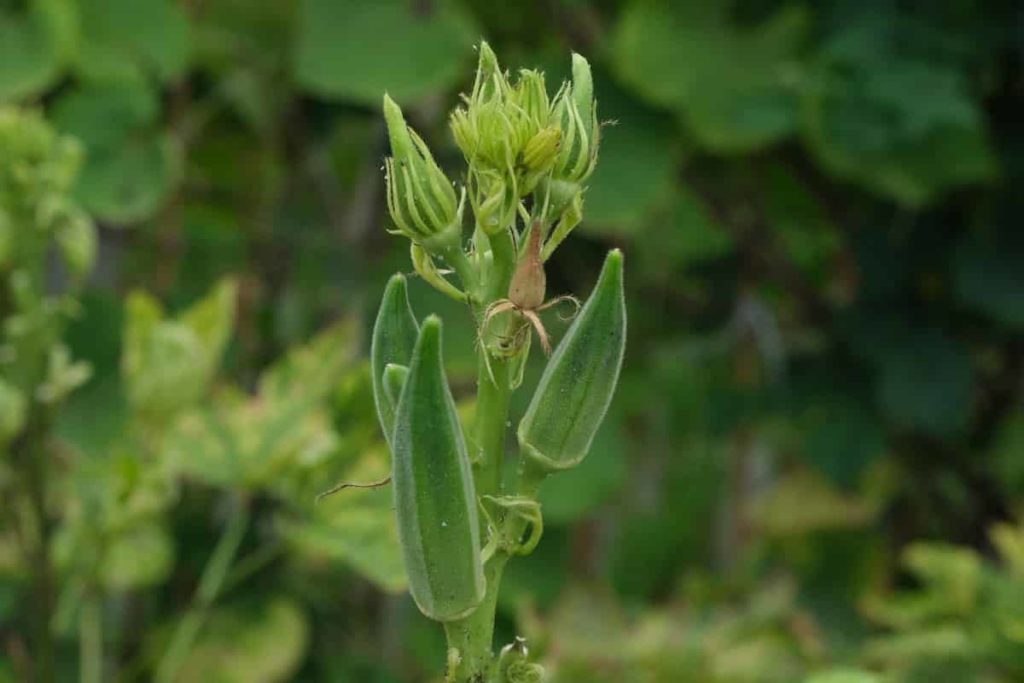
Green Chilies
Sow hot chili seeds 1/2 inches deep and 18 to 24 inches below. Space rows are 24 to 36 inches apart. Sow two more light seeds in each pot for the most successful sprouts.
Basil
Basil needs full sunlight to thrive. Basil should be grown in a place where there is at least six to eight hours of sunshine daily. The soil should be well dried with a pH of 6-7.5.
Lettuce
The maximum soil temperature for germination is 15-26℃. You can grow lettuce all summer long with little knowledge and little preparation.
Pumpkin
Sow seeds directly in the soil. Pumpkins are very sensitive to cold. Make sure the temperature is right for sowing. Plant the seeds in rows that are the size of small pitcher mounds. With hills, the earth will heat up faster and seeds will germinate faster. Plant seeds 1 inch deep. Space mounds are 4 to 8 feet apart.
Best vegetable seeds in the winter season
In the winter season, vegetables are usually sown between August and October. These vegetables are then ready for harvest in the winter months of December from January. This is also a good time to start gardening with seeds.
Cauliflower
It is a popular vegetable of the cabbage family. The seeds are first sown in the shade in a seedbed or seedling trays. Healthy plants are transplanted in high beds 30-35 days after sowing.
Lettuce
Grow these seeds in a rich potting mixture about 1 inch apart and cover with a layer of soil. With a minimum of attention in a few weeks, your lettuce will be ready to please your taste buds.
Spinach (Palak)
A leafy vegetable is known for its nutritional value and ready availability. It works well in cool climates, full sunlight as well as partial shade (3-4 hours). The seeds are sown directly in the raised beds.
Radish
Radishes are perfect for quick and easy harvest with minimal effort. While keeping the soil moist during the growth cycle with at least 6 hours of sunlight a day, radish seeds should be fresh on your table within 25 to 45 days.
In case you miss this: Radish Gardening For Beginners – How To Start, FAQs
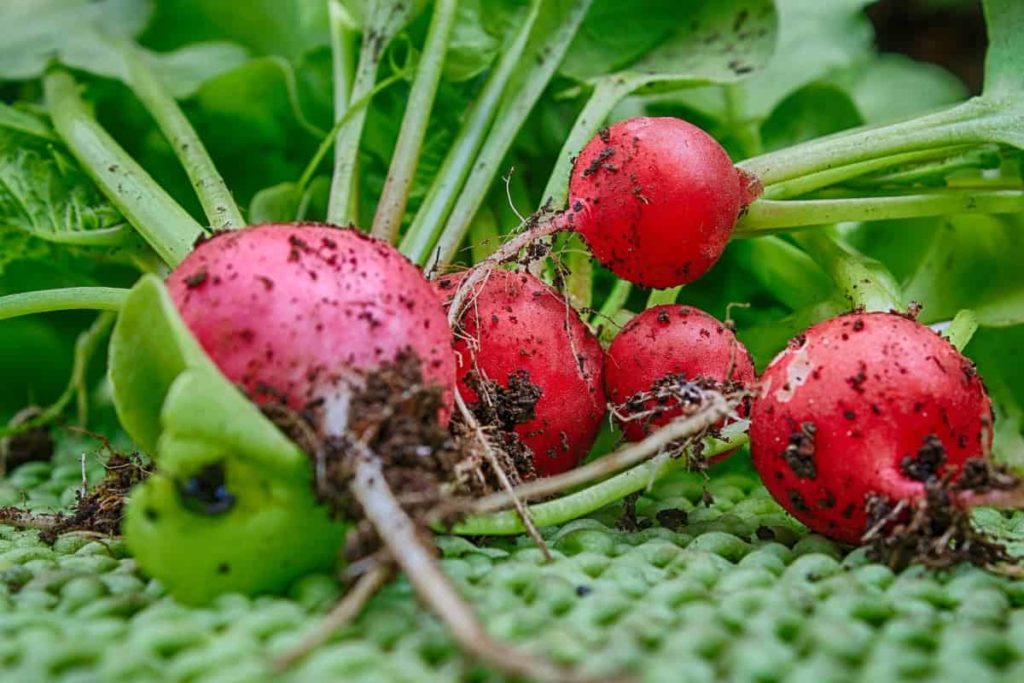
Capsicum (bell pepper)
This non-pungent variety of chili, locally known as Simla Mirch, is successfully grown in the Indian plains in winter. Four weeks after sowing, the seedlings are transplanted to a higher bed in a seed tray.
Carrots
This is one of the most popular root vegetables. Many types of carrots vary in color, texture, shape, and length. Seeds are sown directly on raised beds or peeled beds. Depending on the variety, edible roots can be cut in 80-100 days after sowing.
Onions
All types of onions are winter crops in India, but they need hot and dry conditions as the plants mature and begin to form onion bulbs underground. In cold weather, seeds are sown in beds and one-month-old seeds are transplanted in high beds. Plants need full sun and frequent irrigation. Depending on the variety, onions are ready for harvest in 80-100 days after transplanting.
Green Peas
Peas belong to the same family as beans. Green pea plants are delicate because they hate hot and humid climates and thrive in cold and dry weather. Seeds are directly sown on the raised beds.
Kale
To grow Kale you need loose, well-drained soil. Make rows 18 inches apart, and sow your seeds directly to a depth of 0.5 cm. Keep the soil evenly moist until the seeds germinate then keep the soil moist until the seeds are well established. After mulching the plants with straw to keep the roots cool and moist.
- How to Make Houseplants Bushy: Effective Tips and Ideas
- Innovative Strategies for Boosting Coconut Pollination and Yield
- Pollination Strategies for Maximum Pumpkin Yield
- The Complete Guide to Chicken Fattening: Strategies for Maximum Growth
- Natural Solutions for Tulip Problems: 100% Effective Remedies for Leaf and Bulb-Related Issues
- Revolutionizing Citrus Preservation: Towards a Healthier, Greener Future
- Natural Solutions for Peony Leaf and Flower Problems: 100% Effective Remedies
- Maximizing Profits with Avocado Contract Farming in India: A Comprehensive Guide
- Natural Solutions for Hydrangea Problems: 100% Effective Remedies for Leaf and Flowers
- The Ultimate Guide to Choosing the Perfect Foliage Friend: Bringing Life Indoors
- From Sunlight to Sustainability: 15 Ways to Use Solar Technology in Agriculture
- The Ultimate Guide to Dong Tao Chicken: Exploring from History to Raising
- The Eco-Friendly Makeover: How to Convert Your Unused Swimming Pool into a Fish Pond
- Mastering the Art of Delaware Chicken Farming: Essentials for Healthy Backyard Flocks
- 20 Best Homemade Fertilizers for Money Plant: DIY Recipes and Application Methods
- How to Craft a Comprehensive Free-Range Chicken Farming Business Plan
- Brighten Your Flock: Raising Easter Egger Chickens for Beauty and Bounty
- How to Optimize Your Poultry Egg Farm Business Plan with These Strategies
- Subsidy for Spirulina Cultivation: How Indian Government Schemes Encouraging Spirulina Farmers
- Ultimate Guide to Raising Dominique Chickens: Breeding, Feeding, Egg-Production, and Care
- Mastering the Art of Raising Jersey Giant Chickens: Care, Feeding, and More
- Ultimate Guide to Raising Legbar Chickens: Breeding, Farming Practices, Diet, Egg-Production
- How to Raise Welsummer Chickens: A Comprehensive Guide for Beginners
- How to Protect Indoor Plants in Winter: A Comprehensive Guide
- Ultimate Guide to Grow Bag Gardening: Tips, Tricks, and Planting Ideas for Urban Gardeners
- Guide to Lotus Cultivation: How to Propagate, Plant, Grow, Care, Cost, and Profit
- Agriculture Drone Subsidy Scheme: Government Kisan Subsidy, License, and How to Apply Online
- Ultimate Guide to Raising Araucana Chickens: Breed Profile, Farming Economics, Diet, and Care
- Bringing Hydroponics to Classroom: Importance, Benefits of Learning for School Students
- Ultimate Guide to Raising Polish Chickens: Breed Profile, Farming Economics, Diet, and Care
- Ultimate Guide to Raising Australorp Chickens: Profile, Farming Economics, Egg Production, Diet, and Care
- Silkie Chicken Farming: Raising Practices, Varieties, Egg Production, Diet, and Care
- Sussex Chicken Farming: Raising Practices, Varieties, Egg Production, Diet and Care
- Homemade Feed Formulations for Livestock: Discover Cost-effective Starter to Finisher Feed Recipes
- 20 Best Pig Weight Gain Supplements: Top Swine Weight Gain Formulas
- Ultimate Guide to Elderberry Farming: Propagation, Planting, Yield, Cost, and Profit
i really love this cos there is alot of knowledge here n am a farmer too